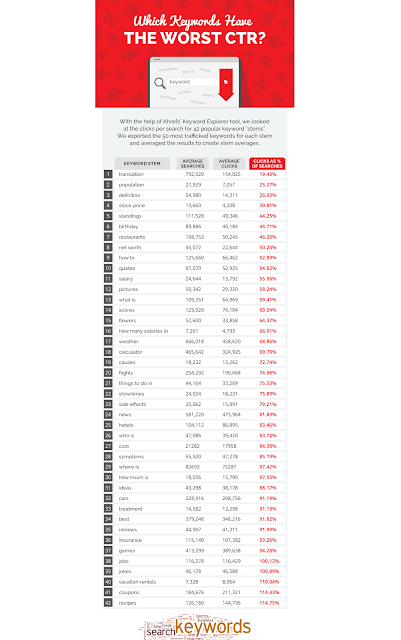Have you ever experienced that amazing feeling of hitting that long-sought-after #1 ranking… and then barely seeing a bump in traffic?
That’s the world Google has built for us, much to do with quick answers, which are now taking keyword searches and chopping down the true amount of traffic we can receive.
I have the suspicion Google is now A/B testing these quick answers in order to surface the answer most likely to get people not to click a result. The result is less and less traffic day by day as we, the content creators, fight to get placement there.
It’s not a fun environment, but it’s one we have to live with. Thanks to Ahrefs’ clickstream data on their new Keyword Explorer 2.0 tool, we can now get better estimations of the true traffic potential of the keywords we go after, and not just an arbitrary search volume number. Their tool shows what percentage of searchers click, and when they do click, how many results they open.
For example, on a search like “coupons“, people are more likely to click multiple results (coupon searches tend to strike out at a good clip). But on a search like “Amazon stock price“, you probably only need to click one thing, if that.
Combining these data points against the average number of clicks, we can find which keywords have the worst and best CTR.
We were curious how common keyword “stems” performed in aggregate, so we gathered 50 of the highest volume keywords for each and averaged the data using Ahrefs’ tool. We then sorted the data to find which stems performed worst… and a few that performed solidly, too.
I found it most surprising to see “how to” searches so high on the list. Although Google is clearly surfacing quick answers here, I was of the mind that they were actually doing an incomplete job showing complete solutions in those boxes. According to this clickstream data, I’m clearly wrong.
Similarly, quotes as a vertical seem like something Google generally isn’t solving super well for with quick answers. However, they frequently have image searches surfacing, showing that users seem to prefer browsing this visual representation rather than click search results.
Overall, it’s a somewhat depressing analysis for SEOs: most searches don’t result in clicks. The datapoint we’ve used for years, search volume, is now becoming more and more imperfect as an indicator of true traffic potential.
But we have to live with it and move on, using new services like Ahrefs and Moz’s Keyword Explorer to calculate more accurate traffic potential and most likely, adjust our estimations downwards.








